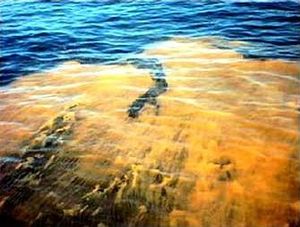Diet Tips for a Longer, Healthier Life
Changing what you eat now could have big benefits later

We know that cutting back on red meat is good for heart health, fish is brain food, and calcium-rich foods can help keep our bones strong. But can shaking up what we eat help us live longer? Learn more about liv pure.
Yes, research shows. In a study published in 2022 in the journal PLOS Medicine, Norwegian researchers analyzed data from a number of studies on diet and health, and used them to come up with estimates of how many more years people could expect to gain if they made some changes.
They found that shifting from a typical Western diet (heavy on red and processed meats, sugar-sweetened beverages, and refined grains) at age 20 to one rich in produce, legumes, fish, whole grains, and nuts could lead to a 13-year increase in life expectancy for men, and 10.7 years for women. But the study also posited that diet improvements adopted at 60 could increase life expectancy by eight years for women and 8.8 years for men. At age 80 you could still benefit, gaining about 3.4 years. (The researchers have a calculator that lets you see the effect of diet changes for someone your age.)
Other research suggests that several dietary patterns from around the world—Okinawan, Mediterranean, and Nordic, to name a few—can have life-extending benefits. Overall, these diets have more similarities than differences and a lot in common with the parameters the Norwegian researchers used in their study. We reviewed the evidence and talked with experts to develop these tips that may help you add (healthier) years to your life. Check these livpure reviews.
Trim Some Calories
Scientists have found that eating fewer calories can translate into a longer life, but early evidence came from studies on yeast and other organisms or animals, like mice and monkeys. The Calerie clinical trial at Duke University in Durham, N.C., is the first controlled study of calorie restriction in healthy people. Drawing from that data, a study published in 2022 showed that eating 14 percent fewer calories for two years had a significant effect on the thymus, an immune-supporting gland that produces T cells that fight infections.
Have Fiber at Breakfast
Adults 40 and older who ate breakfast and took in at least 25 grams of fiber per day had a 21 percent lower risk of dying over a 12-year period. That’s according to an analysis of national data from the West Virginia University School of Medicine published in 2021 in the Journal of the American Board of Family Medicine.
While getting fiber from a variety of plant foods is important, there may be an extra benefit from including fiber from grain foods (such as whole grains and whole-grain bread and cereals) in your day, says Rupak Shivakoti, PhD, an assistant professor of epidemiology at Columbia University’s Mailman School of Public Health in New York City. One study he and his colleagues did, published in JAMA Network Open, found that men and women 65 and older who ate more foods rich in grain fiber had lower levels of various markers of inflammation. Reducing inflammation may play a role in decreasing the risk of heart disease, the leading cause of death in the U.S., and other conditions.
And you might enjoy your morning cup of java even more when you hear that it may help you live longer. Coffee is rich in compounds called polyphenols, which can protect cells against damage. In a 2017 study published in Annals of Internal Medicine, almost 200,000 people—Black, Latino, white, native Hawaiian, and Japanese American ages 45 to 75 at the start of the study—were followed for an average of 16 years. Those who drank a cup of regular or decaf coffee per day had a 12 percent lower risk of dying from any cause during the study period. Just go easy on the cream and sugar.
Fill Up on Fruits and Veggies
The more produce a person eats, the lower the risk of death from any cause—up to five servings per day (three servings of veggies and two of fruit), according to a 2021 study published in the journal Circulation that tracked more than 100,000 men and women over 30 years. Eating more than five daily servings didn’t seem to offer substantially more benefits. And note that potatoes and fruit juices weren’t linked to the same benefits as other forms of produce. It’s best to eat a variety of fruits and vegetables instead of relying on the same types because doing so means you get an array of nutrients.
Swap Out Saturated Fat
Too much saturated fat (found in red meat and butter) can lead to clogged arteries and raise the risk for heart disease. Even cutting small amounts can have a benefit. A study in the journal Circulation Research reviewed data from more than 500,000 people collected by the National Institutes of Health (NIH) for more than 16 years. It found that replacing just 5 percent of calories from saturated fat with foods rich in monounsaturated fat, like avocados, or linoleic acid, a type of polyunsaturated fat found in nuts, seeds, and vegetable oils, was linked with a 15 and 8 percent lower risk of death, respectively.
Eat More Plant Protein
Replacing animal sources of protein with plant protein may also give you extra years. The Norwegian study found that increasing the consumption of beans and lentils—which are among the best plant-protein sources—to ½ to 1 cup per day contributed the greatest gain in life expectancy. And replacing 3 percent of calories from animal proteins with plant proteins was linked with a 10 percent lower risk of early death in a 2020 study from the NIH that tracked more than 400,000 adults for 16 years. The benefit was even greater when the protein replaced was eggs or red meat, specifically.














What people are saying …